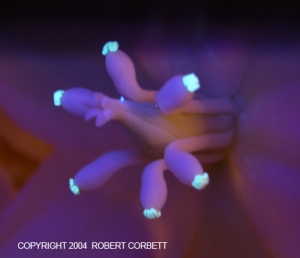
Chapter 14 -- Exploitative Interactions

A complex, three way interaction that insures the survival of the Plagiorhynchus worm.
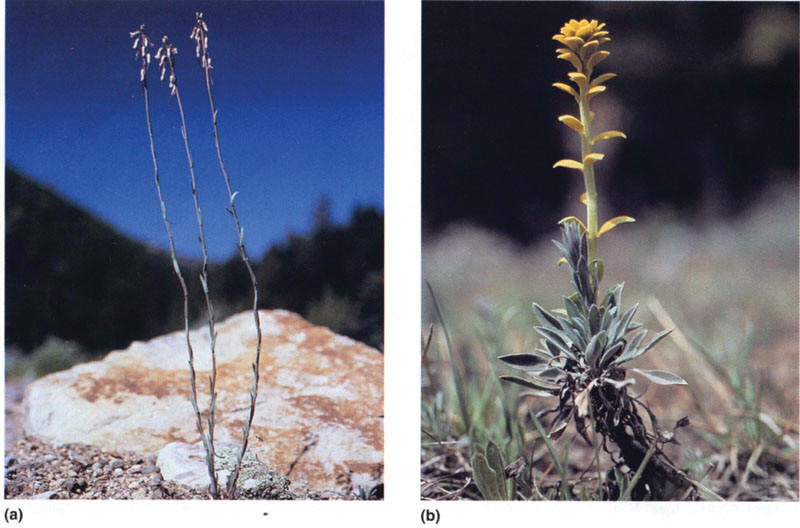
The mustard Arabis holboellii . . . infected by Puccinia monoica
. . . resulting in a pseudoflower, that allows spermatia to be passed from one
fungus to another. This allows the fungus to be fertilized and the spores
then can be carried away by the wind to infect other plants. The fungus actually
produces sugary secretions to attract what would have been the original
pollinators of the mustard. The mustard plant may survive but will never
produce another actual flower.
Cactoblastis cactorum and Opuntia cactus
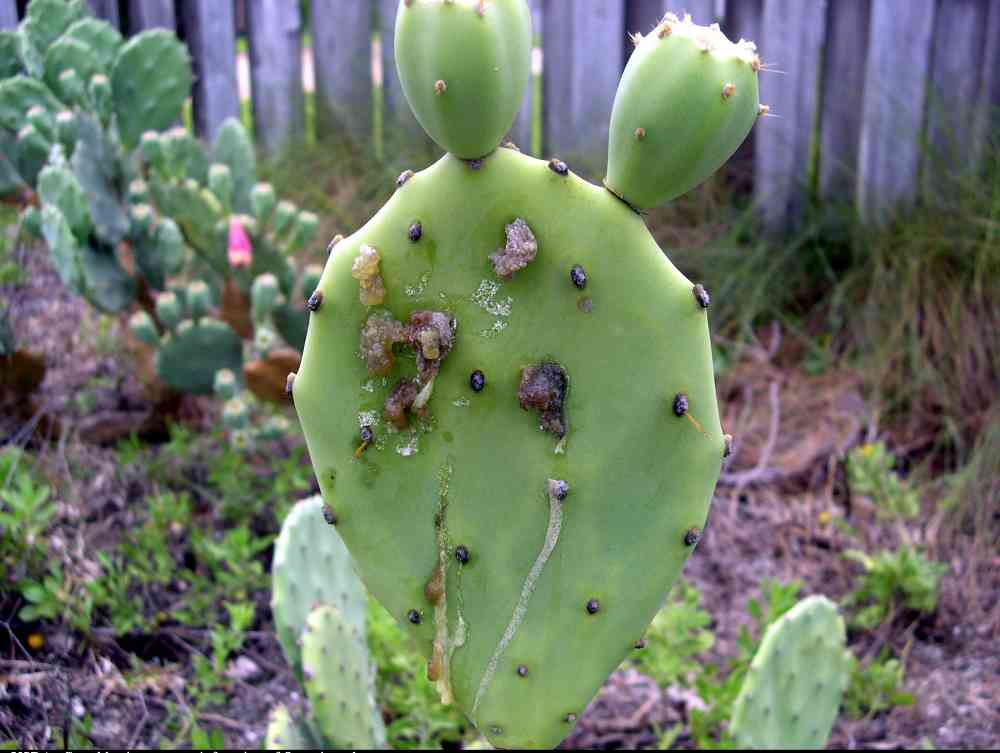

csironnewsblog.com
This moth, from South America, has been used to control introduced Prickly
Pear cactus in Australia.
Unfortunately, the moth has also escaped into the
U.S. and is now damaging native Prickly Pear Cactus
across the southeastern
U.S., and is working it's way west.
Rabbit Papilloma Virus

The papilloma virus has been used like the cactus moth in Australia to
control the spread of accidentally
introduced rabbits

Before mange
(which infects foxes) became widespread in Sweden, hares were kept at lower
numbers due
to healthy foxes preying on the hares. Once the mange
reduced fox numbers, hare numbers increased dramatically.
The classic -- Canadian Lynx and Snowshoe
Hares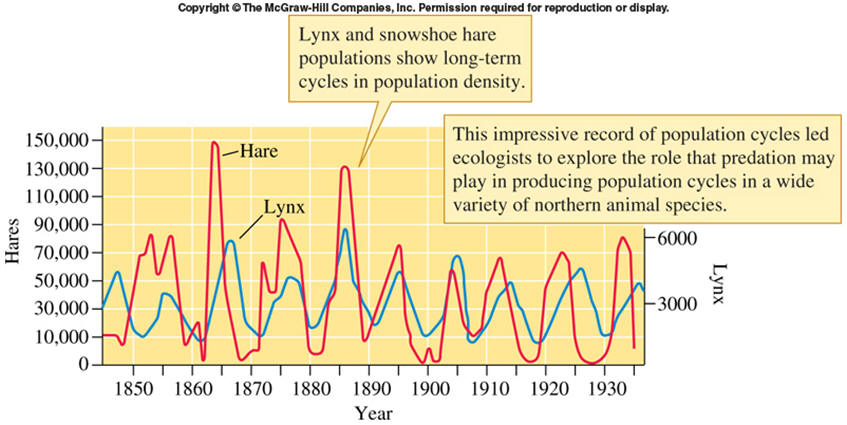
These data are avaible due to the trapping industry, where precise records
were kept of fur pelts that were
collected and sold in Canada. What
you see here is the fluctuations on a nearly ten year cycle, where hares
went up in numbers, followed by the lynx predator numbers, which in turn causes
the hare numbers to go down,
and then the lynx numbers to go down, a cycle
that is repeated and repeated. See the book and your review
sheets for
a fuller explanation.

These experimental treatments with snowshoe hares in Canada show precisedly
the results you would expect.
Hare numbers go up when predators are kept
away, when their food is supplemented, and particularly when
both predators
are kept away AND food is supplemented.
In the following
example, Predator = Didinium nasutum, prey = Paramecium aurelia
In the lab, a predatory Paramecium and a prey protist (Didinium) can be "made" to fluctuate, but only if the Didinium is given a refuge and if the Paramecium can be supplemented from time to time with "immigrants".

Another in lab fluctuation example. A
prey mite that can "balloon", namely send out a piece of web and "ride" the
air currents to another location, was put into an array of oranges (the food for
this mite) which were covered with
petroleum jelly except on the tops of the
oranges. These mites therefore could float from one orange to another.
A predatory mite which cannot balloon was put in with the prey mite. Three
full up and down fluctuations of
population numbers were observed, because
the prey mites at low numbers could "escape" the predator, because
the
predator has a difficult time working through the petroleum jelly to find the
prey mites.
REFUGES
Spatial
Numerical
Size
Unusual Predator/Prey Interaction
CHAPTER 15 -- Mutualisms
Pollination: Who pollinates these flowers?

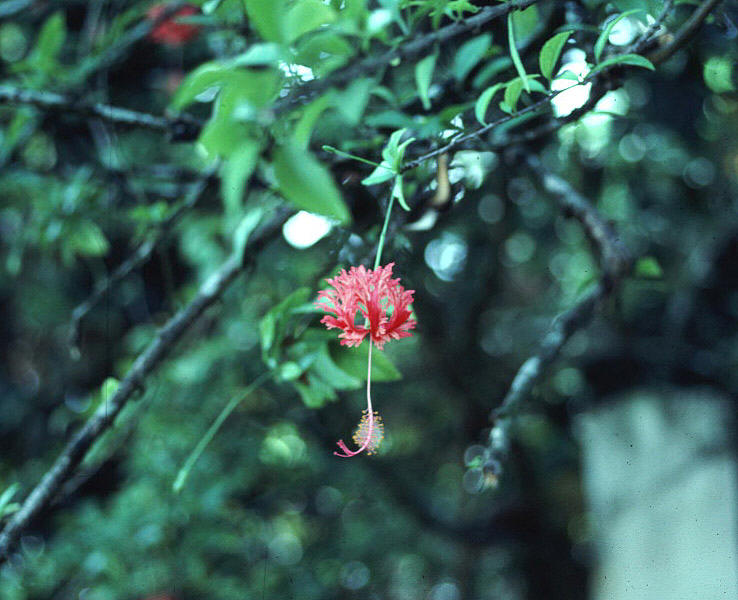
Costa Rica, Hibiscus, Copyright James K. Adams, 1985
This is a LARGE brightly colored flower. You will also notice that the
anthers/reproductive parts are sticking out far from
the body of the flower
where the nectar is. This would require a pollinator that can reach the
nectar while at the same time
picking up pollen from the anthers. This
is a hummingbird pollinated flower.
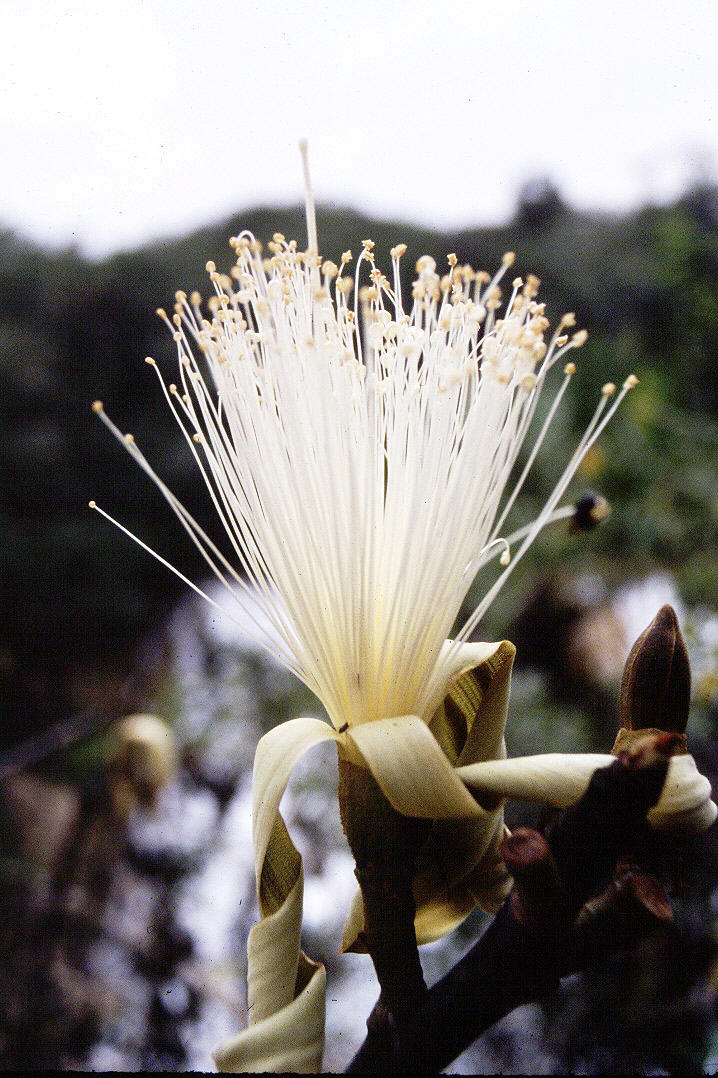
Mexico, Copyright James K. Adams, 1988
This is a white flower, which COULD indicate nighttime pollination. You
will also notice that there are no obvious
petals, which suggests even more
that this is a nighttime pollinated flower. The anthers are VERY numerous,
which
suggest that the flower is looking to put pollen all over the
pollinator. This is a BAT pollinated flower. Bats are
sloppy
pollinators that land on the flower and get pollen all over their fur.

Costa Rica, Copyright James K. Adams, 1985
This flower, also white (which suggest a nighttime pollinator), is long and
tubular, with nectar at the bottom. This would require
a pollinator
that has a long "tongue" to reach the nectar. This is a moth pollinated
flower.
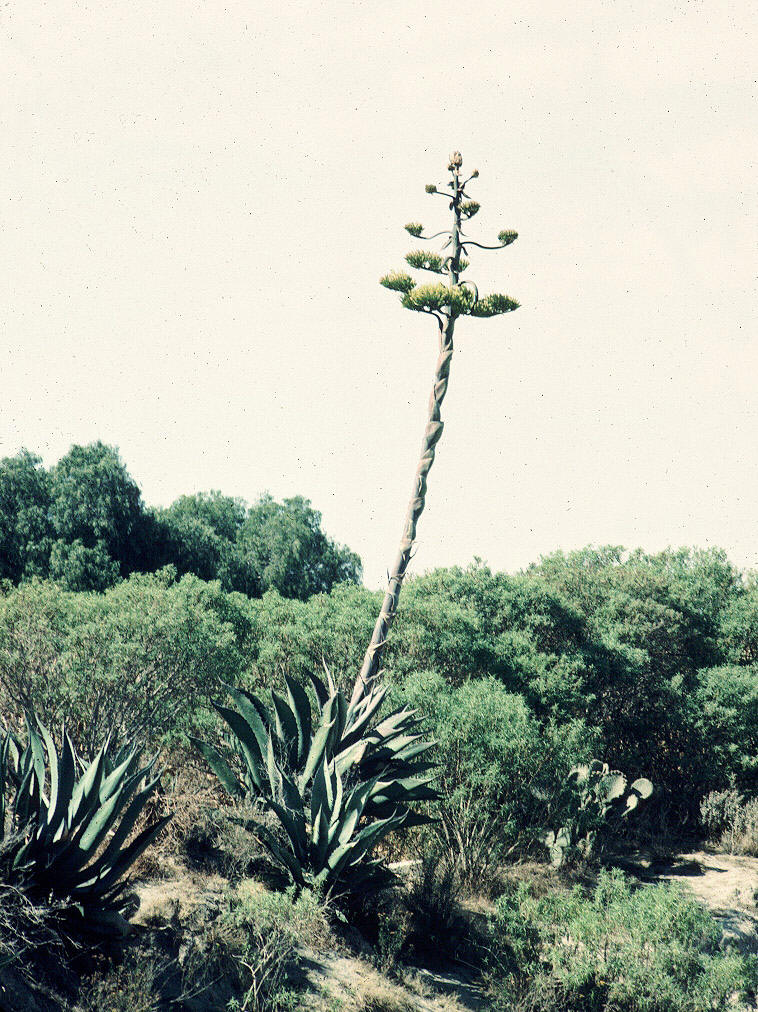
Mexico, Agave, Copyright James K. Adams, 1988
Large arrays of small
yellow flowers at the top of a tall stalk suggest another daytime insect
pollinated flower, or possibly
a hummingbird
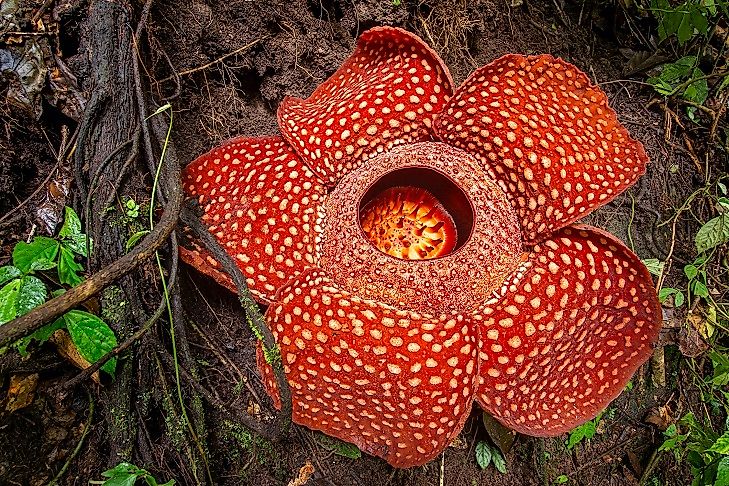
https://www.worldatlas.com/r/w1200-h701-c1200x701/upload/0a/0a/a9/rafflesia-arnoldii.jpg
Rafflesia sp. This flower looks a bit like rotting flesh, and definitely smells like rotting flesh, and, as such, is able to attract beetle and
fly pollinators. This flower is also among the biggest in the world measuring more than 3 feet across.
Bullhorn Acacia and Ants
© Copyright Dan
L. Perlman, 2005-2007
Acacia thorns with naturally occurring "holes" in them allow the ants to live
in the Acacia. The ants, in turn, remove
vines and other insects that
would climb on the Acacia. You can also see the round extrafloral
nectaries at the base
of the leaf stalk right next to the thorns. This
provides the ants with food and keeps them on the plant.

Acacia plants inhabited by ants grew much faster, suggesting this is truly
beneficial to the plants. The ants, of course,
get a free meal from the
extrafloral nectaries of the Acacia, so it is beneficial to them as well.

The Acacia produces ant repellant chemicals in the flowers to prevent the
ants from attacking potentia pollinators.
The repellant chemicals are
produced particularly in new flowers, but wane as the flowers age. Buds and
leaves
do not produce these chemicals.
Helianthella and Ants

This facultative mutualism between Helianthella and ants shows that with the
ants, seed predation on the plants
goes down. Ants again make use of
extrafloral nectaries, and are kept off the flowers by large ray petals.
See
the book and my review sheets for more detail.
Crabs and Corals

When crabs are present, corals produce more fat bodies, suggesting the corals
can sense the presence of the crabs,
and grow nutritious structures to feed
them and keep them there. Why? Corals are much less preyed upon when
crabs are on them, very much like the plants and the ants above.
Yucca and Yucca Moths

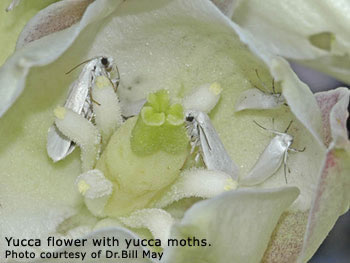
See the discussion near the very end of the page here for a complete explanation of the Yucca/Yucca moth story.
